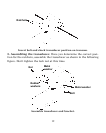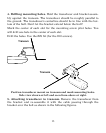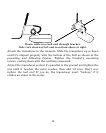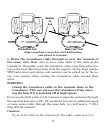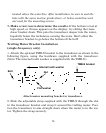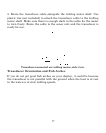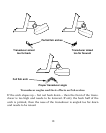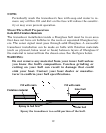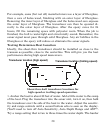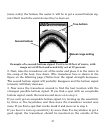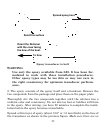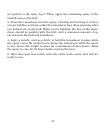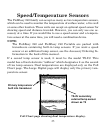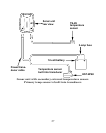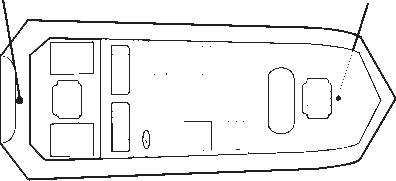
20
For example, some (but not all) manufacturers use a layer of fiberglass,
then a core of balsa wood, finishing with an outer layer of fiberglass.
Removing the inner layer of fiberglass and the balsa wood core exposes
the outer layer of fiberglass. The transducer can then be epoxied di-
rectly to the outer layer of fiberglass. After the epoxy cures for 24
hours, fill the remaining space with polyester resin. When the job is
finished, the hull is watertight and structurally sound. Remember, the
sonar signal must pass through solid fiberglass. Any air bubbles in the
fiberglass or the epoxy will reduce or eliminate the sonar signals.
Testing Determines Best Location
Ideally, the shoot-thru transducer should be installed as close to the
transom as possible, close to the centerline. This will give you the best
performance during high speed maneuvers.
Shoot-thru-hull transducer locations for
high speed or trolling speed operation.
1. Anchor the boat in about 30 feet of water. Add a little water to the sump
of the boat. Plug the transducer into the sonar unit, turn it on, then hold
the transducer over the side of the boat in the water. Adjust the sensitiv-
ity and range controls until a second bottom echo is seen on the display.
(You'll need to turn off Auto Sensitivity, Auto Depth Range and ASP.
Try a range setting that is two to three times the water depth. The harder
Transducer location (trolling speed)
Transducer location (high speed)



